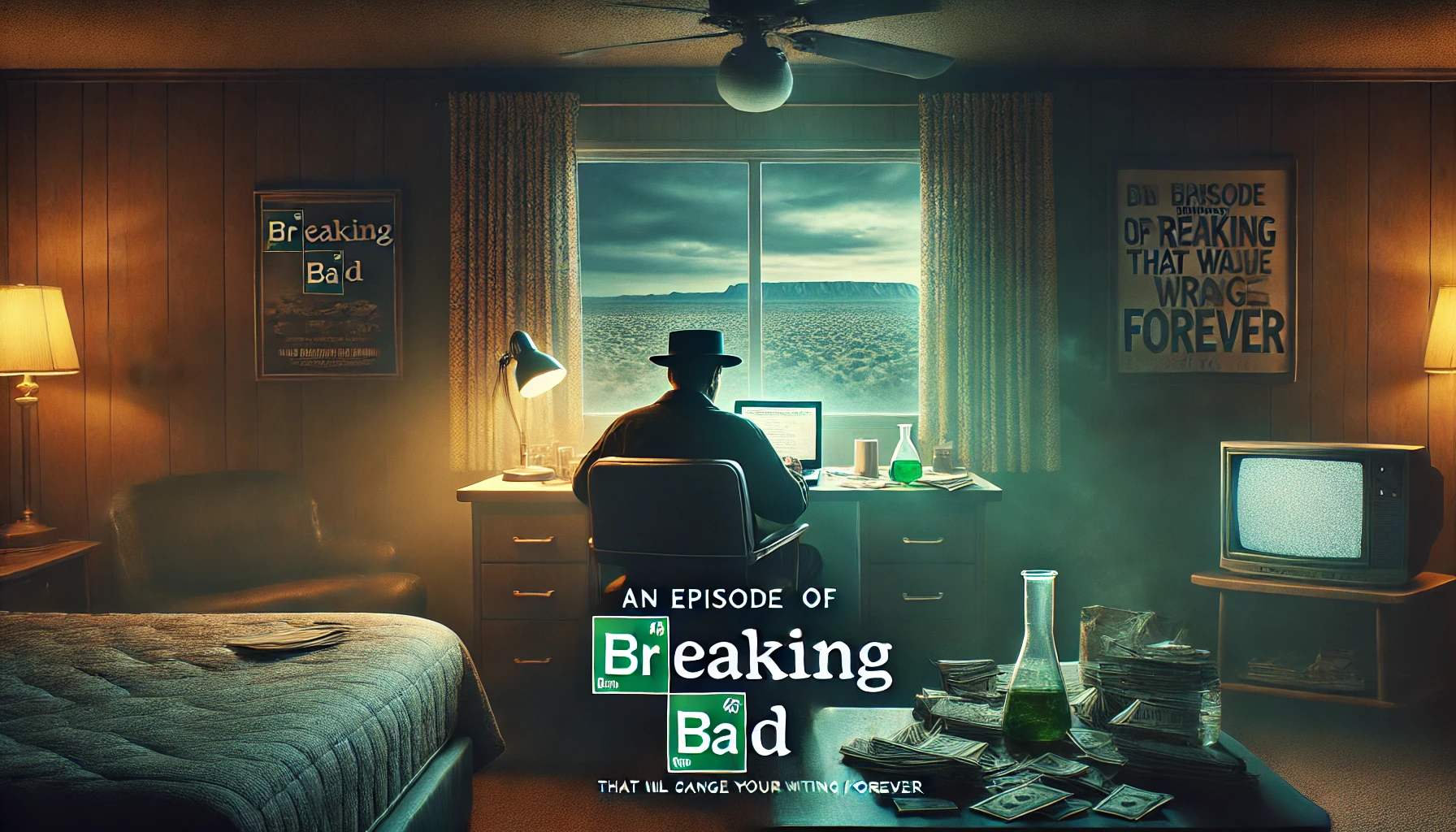It’s not every day that a television episode can teach you more about storytelling than a semester-long writing course. But the pilot episode of Breaking Bad is exactly that rare kind of masterpiece. Whether you’re a novelist, screenwriter, or hobbyist writer, this single episode is packed with narrative strategies that can elevate your craft instantly.
At Book Planets, we work with writers every day through our creative writing services, and this episode is a frequent reference point during our editorial assessments and storytelling consultations. Here’s how the first episode of Breaking Bad can transform your approach to fiction and why every writer should watch it—ideally, with a notebook in hand.
1. Start in the Middle of the Action
Forget prologues. Breaking Bad doesn’t begin with a character bio or backstory—it throws you right into chaos. Walter White is in an RV, half-naked, wearing a gas mask, swerving wildly through the desert. His partner lies unconscious. Police sirens are wailing in the distance.
This “in medias res” opening does two things:
- It grabs attention immediately, which is critical in both screenwriting and fiction.
- It creates mystery, making readers/viewers crave the context behind the madness.
Writers often get stuck introducing their world and characters slowly. But this episode shows that by jumping into the heart of the conflict, you give yourself permission to backfill the narrative as you go.
2. Make Your Protagonist Unique—and Smart
Walter isn’t just a chemistry teacher. He’s brilliant, meticulous, and strangely likable, even when doing questionable things. His intellect becomes his weapon, and that’s what makes the story possible.
In fiction, your protagonist needs a defining trait—something that drives their decisions and shapes their transformation. Bland protagonists don’t work because they don’t challenge the reader or the plot. This is a point we frequently make during book content editing: your main character should be distinct, intelligent, and capable of surprising the reader.
3. Build Sympathy Fast
Writers often forget that readers need an emotional anchor. Early in the episode, we see Walter being humiliated by students, underpaid, disrespected—and then diagnosed with terminal lung cancer.
This layered vulnerability helps the viewer invest in Walter’s journey, even when he makes morally grey choices later. Sympathy doesn’t come from pity—it comes from relatable, human moments. If you can capture that early in your story, you’ll earn your readers’ loyalty.
4. Contrast Is Everything
Walter’s transformation from a meek schoolteacher to a criminal mastermind hits harder because of the extreme contrast. In the beginning, he’s shown struggling with a gun, wearing dad sweaters, and being walked over by everyone, including his boss and in-laws.
Good writing thrives on contrast. When we conduct fiction editing services, one of the top notes we give is: “Make the transformation clearer. Show us who they were, so we appreciate who they’ve become.”
5. Foreshadow Without Telling
Walter’s interest in a drug bust shown on TV isn’t just a throwaway scene—it plants the seed for everything that follows. He asks, “How much money is that?” and the line lingers. It’s subtle, but it’s a huge moment of character motivation.
As a writer, every line your character speaks can serve multiple purposes: plot advancement, emotional layering, and foreshadowing. The best fiction doesn’t shout its future twists—it hints at them like a breadcrumb trail.
6. Show Emotion Through Objects, Not Dialogue
In a brilliant scene, Walter receives his cancer diagnosis. But we don’t hear the doctor speak. Instead, we watch Walter focus on a tiny mustard stain on the doctor’s coat. That stain says everything about his disorientation, denial, and emotional suppression.
Great writers know that sometimes silence or detail is louder than dialogue. This is a key element we highlight in our editorial assessments: trust your readers. Let them infer. Don’t over-explain emotions.
7. Keep Raising the Stakes
Cancer. Financial ruin. A pregnant wife. A disabled son. Each layer in Walter’s life adds complexity—and tension.
If your story feels flat, it’s often because the stakes don’t escalate. Your protagonist should face a series of increasingly difficult decisions. Every win should come at a cost. Every act should create consequences. This relentless pressure creates page-turning momentum.
8. Use Lies to Create Drama
When Skyler asks Walter about his day after his diagnosis, he says, “Fine.” That lie is tiny, but it’s loaded with tension.
Lies drive fiction. They create conflict, suspense, and emotional fallout. Especially in dialogue, lies add subtext—what’s said vs. what’s meant. If every character in your story tells the truth all the time, you’re missing out on powerful dynamics.
9. Symbolism Brings Depth
In one haunting scene, Walter lights matches and throws them into a pool. It’s quiet. Slow. But deeply symbolic. It reflects his inner turmoil and the fragility of life.
Symbolism isn’t about being cryptic. It’s about giving readers something to interpret. A symbol can unify your theme, reinforce a motif, or reveal character psychology without a single word. It’s one of the most effective tools we help refine during book content editing.
10. Let Character Drive the Story
Walter doesn’t just fall into meth-making. He makes decisions—he goes on the ride-along, he chooses to approach Jesse, he decides to cook. These actions reveal character and push the plot forward.
Strong stories are character-driven. If your plot could work with a different protagonist, you might need to revisit your structure. Every decision should feel organic, not convenient. That’s a hallmark of good storytelling.
11. Inject Humor Without Undercutting Drama
Yes, Breaking Bad is serious. But Walter standing in his underwear in the desert is also hilarious. That moment of absurdity provides relief and makes the show more human.
Humor doesn’t undermine emotional gravity—it enhances it. Light moments allow your heavier scenes to land with greater impact. Balance matters.
12. Show the Cost of Choices
The episode ends not with triumph but with damage. Walter is puking. Jesse is bruised. Every gain has a cost.
In fiction, stakes are only meaningful if they result in visible consequences. If characters emerge from chaos unscathed, the reader won’t believe the risk. Show the bruises—physical or emotional.
Why This Episode Matters to Writers?
The Breaking Bad pilot is a masterclass in tension, transformation, and efficient storytelling. In just one hour, it sets up a complex character arc, builds an emotionally compelling world, and hooks the audience with cinematic precision.
If you’re struggling with structure, character development, or pacing, studying this episode is more effective than a dozen how-to books. Better yet, apply the techniques directly to your work-in-progress.
And if you need help refining your manuscript, our team at Book Planets offers:
- Creative writing services tailored to your genre and goals
- In-depth fiction editing services
- Expert book content editing to sharpen structure and language
- Comprehensive editorial assessment to diagnose what’s working and what’s not

